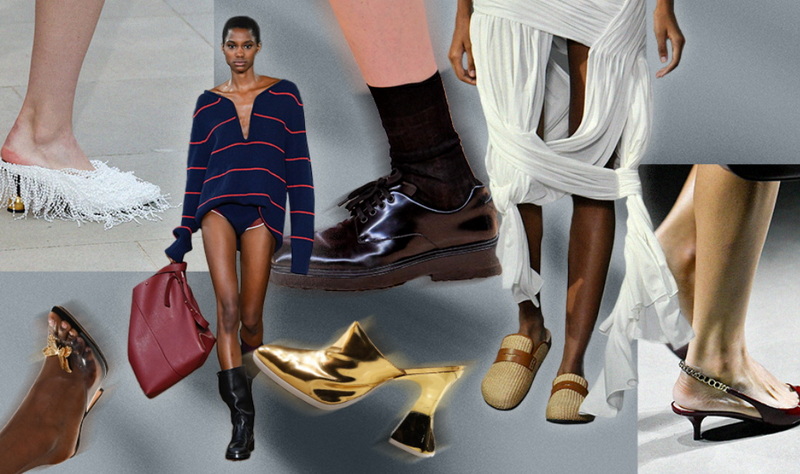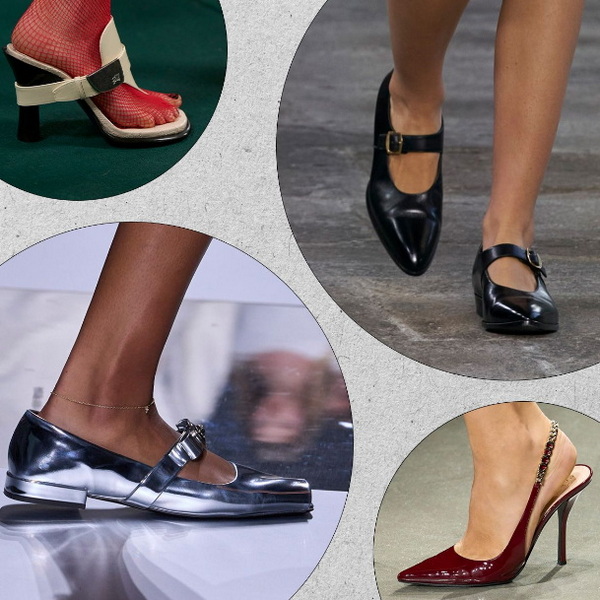Content Menu
● The Evolution of High Heels
>> From Practicality to Fashion
● The Golden Age of High Heels
>> Adaptation and Endurance
>> Social Expectations and Fashion Norms
● The Physical Challenges of Wearing Heels
>> Strategies for Comfort
● The Modern Perspective on High Heels
>> The Health Debate
>> The #KuToo Movement
● The Psychology of High Heels
>> Confidence and Empowerment
>> Social Status and Attractiveness
● Conclusion
● FAQ
>> 1. When were high heels first invented?
>> 2. Who popularized high heels for women?
>> 3. What are the health risks associated with constantly wearing high heels?
>> 4. How did women in the past manage the discomfort of wearing heels all the time?
>> 5. Are there any modern movements challenging the expectation for women to wear high heels?
● Citations:
High heels have been a staple of women's fashion for centuries, captivating wearers and onlookers alike with their ability to elongate the legs, enhance posture, and add a touch of elegance to any outfit. However, the question of how women managed to wear heels all the time throughout history is a fascinating one that delves into the realms of fashion, sociology, and even physiology.

The Evolution of High Heels
To understand how women wore heels all the time, we must first explore the evolution of high heels themselves. Contrary to popular belief, high heels were not originally designed for women. In fact, their origins can be traced back to ancient Egypt and Persia, where they were worn by both men and women for practical purposes[1].
From Practicality to Fashion
In 10th century Persia, high heels were essential for horseback riders and marksmen. The heels helped soldiers secure their stance in stirrups, allowing them to shoot their bows and arrows more effectively[6]. This practical use of heels soon spread to Europe, where they became a symbol of masculinity and high social status.
It wasn't until the 17th century that high heels began to be associated with women's fashion. Catherine de Medici, a 14-year-old bride-to-be, is often credited with popularizing high heels for women. She wore two-inch heels on her wedding day to appear taller and more confident[8].
The Golden Age of High Heels
By the 18th century, high heels had become firmly established as a feminine fashion accessory. Women of the upper classes embraced heels as a symbol of status and refinement. But how did they manage to wear them all the time?
Adaptation and Endurance
Women of the past gradually adapted to wearing heels through constant practice and endurance. Their bodies and muscles became accustomed to the altered posture and gait required by high heels. This adaptation process was often started at a young age, as girls were introduced to heeled shoes early in their lives[2].
Social Expectations and Fashion Norms
Social expectations played a significant role in women's ability to wear heels all the time. In many societies, it was considered improper for women of certain classes to be seen without heels. This societal pressure encouraged women to endure any discomfort associated with wearing heels[3].
The Physical Challenges of Wearing Heels
While women of the past may have worn heels all the time, it wasn't without its challenges. The physical effects of constantly wearing high heels can be significant and include:
1. Altered posture and gait
2. Increased pressure on the balls of the feet
3. Potential for foot deformities like bunions and hammertoes
4. Back and knee pain
Strategies for Comfort
To manage these challenges, women throughout history employed various strategies:
1. Gradual Height Increase: Women would start with lower heels and gradually increase the height as they became more comfortable.
2. Custom-Made Shoes: Wealthy women often had shoes custom-made to fit their feet perfectly, reducing discomfort.
3. Padding and Inserts: Various forms of padding and inserts were used to cushion the feet and distribute weight more evenly.
4. Regular Foot Care: Foot baths, massages, and other forms of foot care were common practices to alleviate pain and discomfort.

The Modern Perspective on High Heels
In recent years, there has been a shift in attitudes towards wearing high heels all the time. Many women now choose to wear heels only for special occasions or opt for more comfortable alternatives in their daily lives.
The Health Debate
Modern research has highlighted the potential health risks associated with constantly wearing high heels. A study published in the Frontiers in Psychology journal suggests that while high heels may increase a woman's attractiveness by altering her lumbar curvature, they can also lead to long-term health issues[9].
The #KuToo Movement
In recent years, movements like #KuToo in Japan have challenged the societal expectation for women to wear high heels in professional settings. This reflects a growing awareness of the physical and psychological impacts of mandatory heel-wearing[9].
The Psychology of High Heels
The question of how women wore heels all the time isn't just about physical endurance—it's also deeply rooted in psychology.
Confidence and Empowerment
Many women report feeling more confident and empowered when wearing high heels. This psychological boost may have helped women of the past endure the physical discomfort associated with constant heel-wearing[5].
Social Status and Attractiveness
High heels have long been associated with higher social status and increased attractiveness. This perception may have motivated women to wear heels despite any discomfort[9].
Conclusion
The question of how women wore heels all the time throughout history is a complex one, involving factors ranging from physical adaptation and societal expectations to psychological motivations. While women of the past may have endured significant discomfort to adhere to fashion norms, modern perspectives on high heels are more varied. Today, women have more choices than ever when it comes to footwear, allowing them to balance style, comfort, and personal preference.

FAQ
1. When were high heels first invented?
High heels were first worn in the 10th century by Persian cavalry to help keep their shoes in stirrups. They were not originally designed for women, but for military purposes[11].
2. Who popularized high heels for women?
Catherine de Medici is often credited with popularizing high heels for women. At age 14, she wore two-inch heels on her wedding day to appear taller and more confident[8].
3. What are the health risks associated with constantly wearing high heels?
Constant wear of high heels can lead to altered posture, increased pressure on the balls of the feet, potential foot deformities like bunions and hammertoes, and back and knee pain[3].
4. How did women in the past manage the discomfort of wearing heels all the time?
Women in the past managed discomfort through gradual adaptation, custom-made shoes, use of padding and inserts, and regular foot care practices like foot baths and massages[2].
5. Are there any modern movements challenging the expectation for women to wear high heels?
Yes, movements like #KuToo in Japan have challenged societal expectations for women to wear high heels in professional settings, reflecting a growing awareness of the physical and psychological impacts of mandatory heel-wearing[9].
Citations:
[1] https://fashion-era.com/fashion-history/history-of-high-heels
[2] https://en.wikipedia.org/wiki/High-heeled_shoe
[3] https://pmc.ncbi.nlm.nih.gov/articles/PMC10651440/
[4] https://unsplash.com/s/photos/woman-high-heels
[5] https://www.youtube.com/watch?v=hJfpeEmtZ7U
[6] https://www.pbs.org/video/when-men-wore-high-heels-zgvmob/
[7] https://www.youtube.com/watch?v=zu8Wlm4y1wc
[8] https://study.com/academy/lesson/who-invented-high-heels.html
[9] https://www.frontiersin.org/journals/psychology/articles/10.3389/fpsyg.2017.01875/full
[10] https://www.freepik.com/photos/woman-high-heels
[11] https://www.youtube.com/watch?v=YNT5HIE5r4M

















